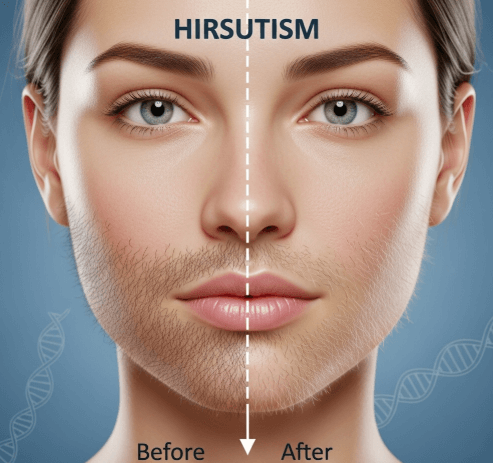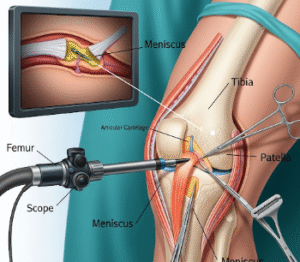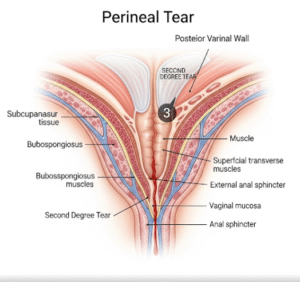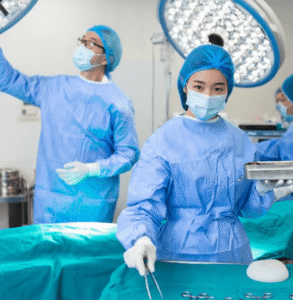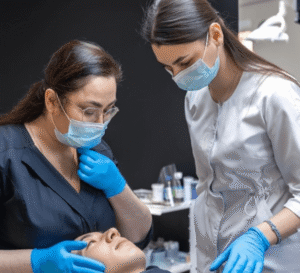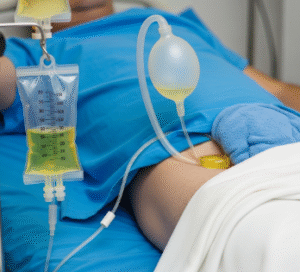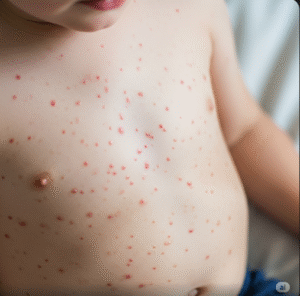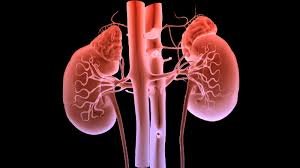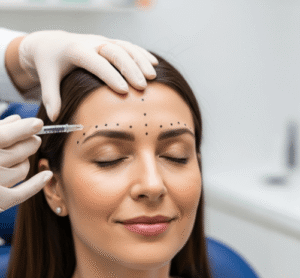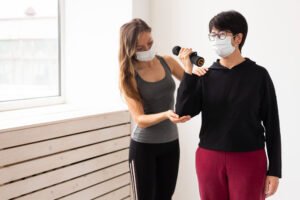What it is
➝ Hirsutism is excessive, male-pattern hair growth in women, typically affecting the face, chest, abdomen, and thighs.
➝ It is caused by increased androgen activity at the hair follicle, often linked to polycystic ovary syndrome (PCOS), adrenal disorders, medications, or idiopathic hyperandrogenism.
➝ Anti-androgen regimens target this pathway, reducing hair growth over time.
➝ In Korea, treatment is tailored through dermatology, endocrinology, and gynecology collaboration, often combining pharmacologic therapy with cosmetic procedures (laser hair removal).
Why it’s done
→ To reduce unwanted hair growth and improve cosmetic appearance.
→ To manage hormonal imbalance and prevent progression of PCOS-related symptoms.
→ To reduce psychological distress, including anxiety, depression, and social embarrassment.
→ To provide long-term suppression of androgen effects on hair follicles.
Alternatives
→ Cosmetic measures: laser hair removal, electrolysis, waxing, shaving, depilatory creams.
→ Hormonal contraceptives: combined estrogen–progestin pills to suppress ovarian androgen production.
→ Insulin-sensitizing agents (metformin) for PCOS-related hirsutism.
→ Topical eflornithine cream for facial hair (slows growth but not widely available everywhere).
Preparation
→ Clinical assessment using Ferriman–Gallwey score to measure severity.
→ Laboratory evaluation: serum testosterone, DHEAS, LH/FSH ratio, prolactin, thyroid, 17-OHP to rule out secondary causes.
→ Baseline liver function, kidney function, and electrolytes depending on drug choice.
→ In Korea, many women undergo ultrasound to assess ovaries if PCOS is suspected.
How it’s Done – Anti-Androgen Regimens
First-line: Combined Oral Contraceptives (COCs)
→ Suppress luteinizing hormone (LH) and reduce ovarian androgen production.
→ Ethinyl estradiol + drospirenone, desogestrel, or cyproterone acetate are commonly used.
→ Also provide menstrual cycle regulation and acne improvement.
→ In Korea, COCs are widely prescribed as the foundation of hirsutism management.
Second-line: Add an Anti-Androgen
→ Spironolactone
- Dose: 50–200 mg/day orally.
- Mechanism: blocks androgen receptors, reduces sebum and hair growth.
- Monitoring: potassium and renal function every 3–6 months.
- Common in Korean dermatology–endocrine clinics.
→ Cyproterone acetate
- Used in combination with estrogen in some COCs or as separate therapy.
- Strong anti-androgen effect, but requires monitoring for liver function and mood changes.
- Available in select Korean clinics for resistant cases.
→ Flutamide
- Potent androgen receptor blocker.
- Rarely used in Korea due to risk of severe hepatotoxicity.
→ Finasteride (5α-reductase inhibitor)
- Dose: 2.5–5 mg/day.
- Blocks conversion of testosterone to dihydrotestosterone (DHT).
- Often combined with COCs in Korea for resistant hirsutism.
Adjunctive Measures
→ Metformin: for PCOS patients with insulin resistance.
→ Topical eflornithine: reduces facial hair growth rate; sometimes imported for patients who need additional topical control.
→ Laser hair removal: widely used in Korea as a cosmetic adjunct for rapid results.
Recovery
→ Visible reduction in hair density takes 3–6 months, as hair follicles cycle slowly.
→ Maximum benefit usually seen at 6–12 months of continuous therapy.
→ Laser or eflornithine can provide quicker cosmetic results while waiting for systemic therapy to take effect.
→ Long-term therapy is often needed to maintain control.
Complications
→ Spironolactone: hyperkalemia, menstrual irregularities, dizziness, breast tenderness.
→ Cyproterone acetate: weight gain, mood changes, liver toxicity (rare).
→ Finasteride: teratogenic (contraindicated in pregnancy).
→ COCs: risk of thromboembolism, especially in smokers or patients with metabolic syndrome.
→ Regular monitoring helps minimize risks.
Treatment Options in Korea
→ Dermatology and gynecology clinics often co-manage hirsutism, especially in women with PCOS.
→ First-line therapy is usually COCs ± spironolactone, with monitoring every few months.
→ Laser hair removal is highly accessible and frequently combined with systemic therapy for best cosmetic outcomes.
→ Finasteride and cyproterone acetate are used selectively in resistant cases.
→ Korean clinics emphasize patient education, hormonal monitoring, and lifestyle modification (weight control, diet, stress reduction).
→ With Korea’s integrated dermatology–endocrinology system, hirsutism patients receive comprehensive care that balances hormone regulation with cosmetic improvement.

